The 1st Prize was awarded to a group of students from our school that participated in the 7th Student Competition ‘Exhibits through the eyes of the students’ on the topic “The preparation of a medicine in times of a pandemic”. The competition was organized by the Museum of History of the University of Athens (UoA) in collaboration with the Department of Pharmacy and the Museum of Pharmacology of the same University. The award ceremony took place on Monday, June 19, in the Museum of History of the UoA in Plaka, Athens.
We would like to thank the organizing committee of the competition for awarding our team and in particular the Director of Public Relations and History of the University of Athens – University of Athens Ms. Sotiria-Alexandra Sakellariou, the Head of the Department of Museums and Historical Archives of the EKPA. Mr. Evangelos Papoulia and the Curator – Museum Educator of The Athens University History Museum, Ms. F. Tsitou. We also thank the Vice Chancellor of Academic Affairs and Student Welfare Prof. Dimitrios Karadimas, Assoc. Prof. of Pharmacology H. Liapis and Mr. Assoc. Professor of Medicine Mr. I. St. Papadopoulos in charge of the Museum of Pharmacology.
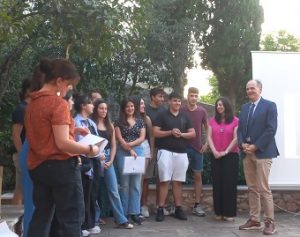
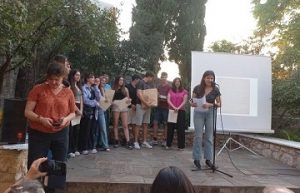
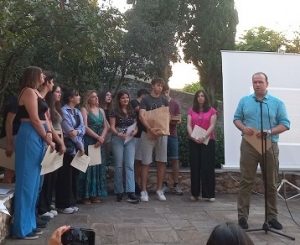
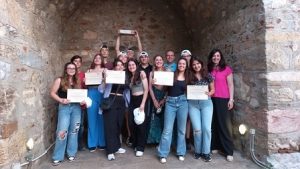
In the award ceremony
In order to participate in the competition, it was mandatory to make two visits: to the Museum of History of the UoA and to the Museum of Pharmacology (Department of Pharmacy) of the UoA, so that the students could be inspired by an exhibit of the museums and compose their work.
Our team was inspired by the book “Pharmacology and Prescribing” by G. Ioakeimoglou, which is exhibited in the Museum of History of the UoA and by the collection of Microscopes, which are exhibited in the Museum of Pharmacology, in order to develop the requirements for the competition. More specifically, the students of our school, working in small groups and under the supervision of their teachers, carried out the following:
Α. For the 1st section of the competition, they composed an original research paper on malaria as a past pandemic and a modern endemic disease. In it, they report statistical data on its spread, describe how it is transmitted, tell the interesting story of the discovery and isolation of artemisinin, which is the main drug for its treatment, and finally discuss the use of artemisia (the plant from which medicine was taken) as herb and drink.
Β. For the 2nd section of the competition, students produced the following:
- They printed the artemisinin molecule on the school’s 3D printer (Image 1). The molecule was designed in chemical compound design software and then the file was processed in 3D printing software. After it was printed, the necessary supports were removed, it was sanded and painted with the usual colors that represent the chemical elements.

Image 1: The printed artemisinin molecule
2. They created a poster (Image 2) about malaria so that the visitors of the museum would be informed.
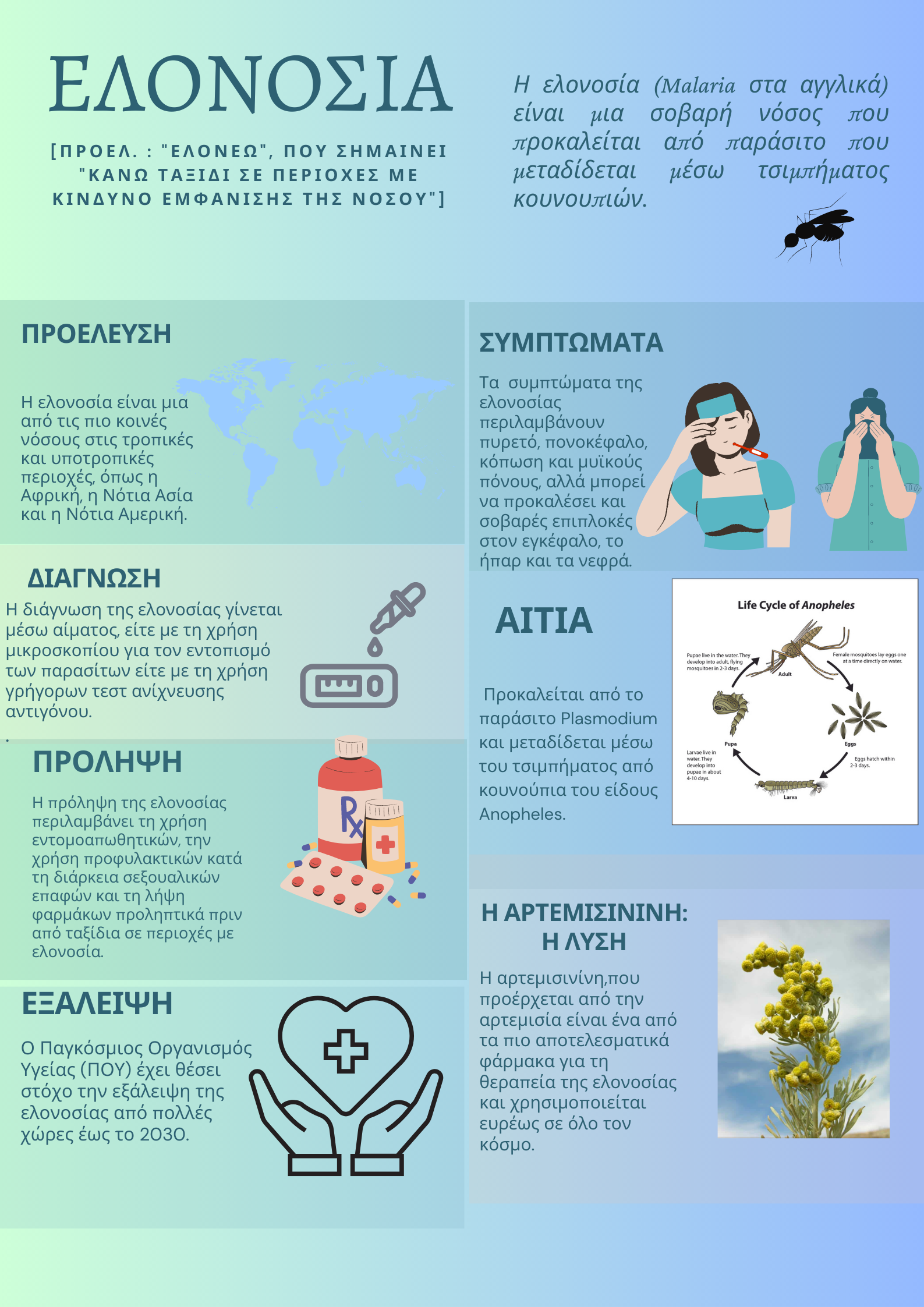
Image 2: The poster
3. They created a stop-motion animation video, using sketches designed by a student (Image 3). They used a cellular phone for video and sound recording (Image 4) and software for video and image editing.

Image 3: Some of the sketches used in the video

Image 4: Making of the video
4. They created two quizzes for Android, with questions about the subject (Image 5) and accompanying poster (Image 6).
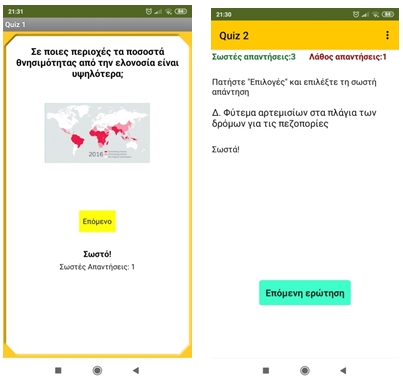
Image 5: Screenshots of the quizzes
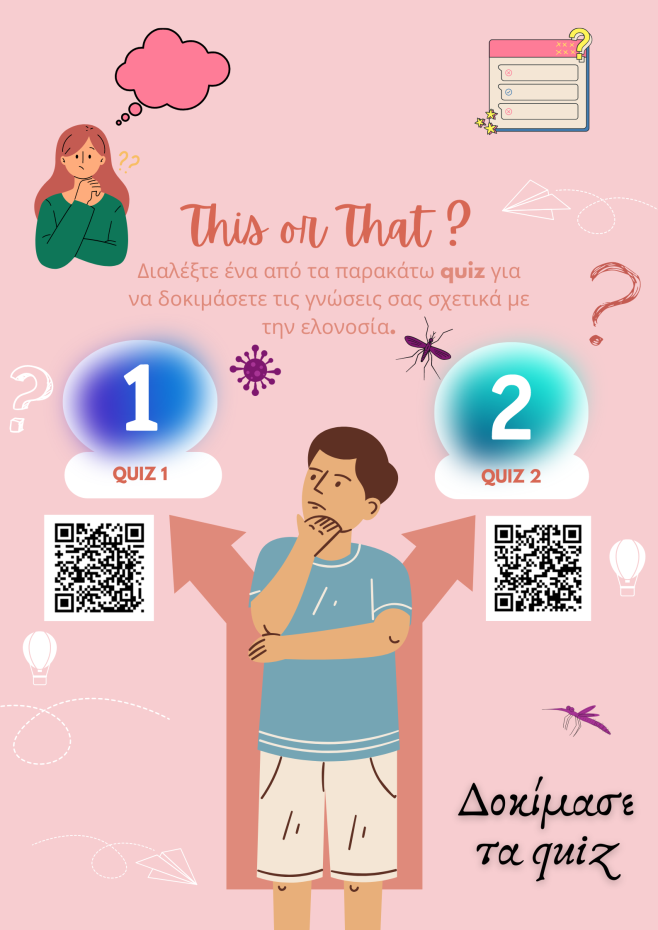
Image 6: Αccompanying poster for the quizzes
5. They created an electronic game inspired by the subject (Image 7), which the visitor can play any time online either on a computer or on a mobile device, as well as the accompanying poster with instructions (Image 8).
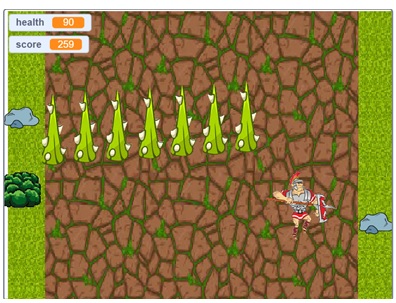
Image 7: Screenshot of the game
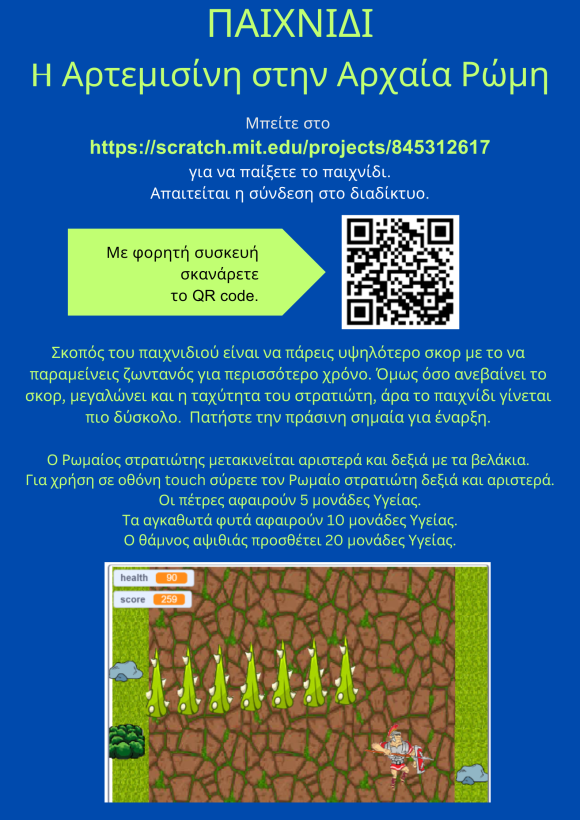
Image 8: Accompanying poster for the game
6. They created a virtual museum, presenting in brief the bibliographic research about the subject, with the accompanying poster (Image 9). The narrations were recorded with a mobile phone.
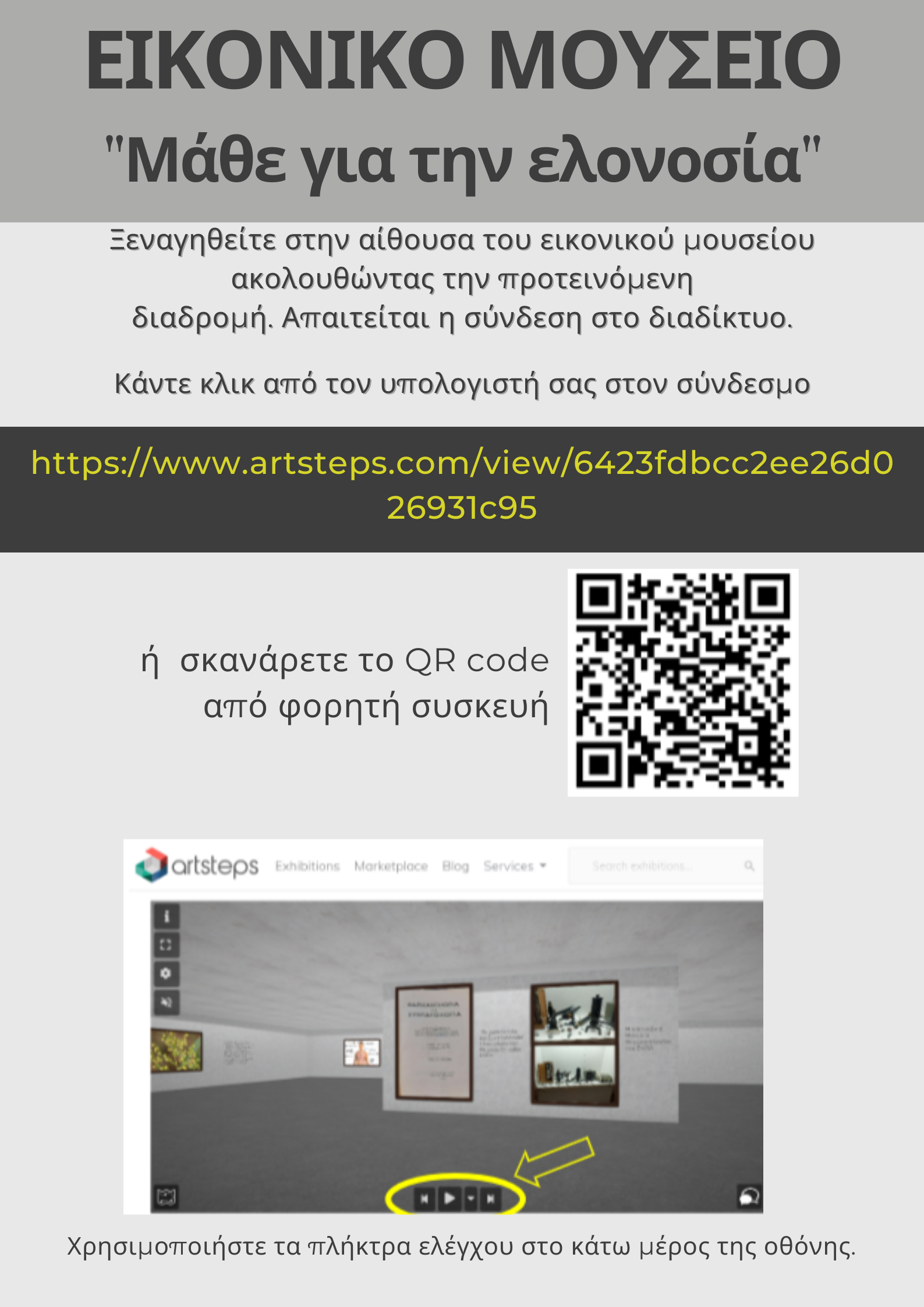
Image 9: Poster for the virtual museum
The purpose of the team was for the students to examine malaria as a pandemic both in antiquity and in the modern world, as well as to study the chemical composition of the molecule artemisinin, which is also the active substance for fighting the disease. The students looked for statistics on the global presence of malaria that still makes it a pandemic. They also understood the mode of action of the active substance against the plasmodium that causes it.
Regarding Section B, the team wanted to emphasize interactivity and inclusion when touring the museum spaces, activating different senses of the visitor, who can follow our narrative virtually (remotely) , to view the 3D molecule of artemisinin and furthermore, to have “contact” with the museum even after the visit, by playing the game or trying the quizzes.
Our students imagined a museum that is different, interactive and friendly to everyone, making use of technology and this was the proposal they submitted to the competition.
Supervising teachers (in alphabetical order):
Chrysi Angelidou (Chemist), Christodoulos Makedonas (Chemist), Panagiota Ismini Matthe (ICT teacher)
A-class and B-class students who participated (in alphabetical order):
Section Α – Βibliographic Research
Myrsini-Efraimia Kana, Anna Manavopoulou, Maria Maratou, Anastasia Aikaterini Papanikolaou, Vasiliki Maria Patri, Ioulieta Perveli, Andriana Petropoulou, Anna-Maria Skourtia
Section B
Posters
Panagiotis Konstantopoulos, Loukia Despoina Moutousi, Vasiliki Maria Patri
Game
Ioannis Doumenis, Panagiotis Konstantopoulos
Quizzes
Dimitrios Dalamagkas, Despoina Partheniou, Anastasia Pilichou
Virtual Museum
Aikaterini Varou, Melina Dionysopoulou
3D printing
Iason Vaskas, Spyridon Sofoulis, Nefeli Iakovaki
Video – Image and sound editing
Themistoklis Konstantinidis, Panagiotis Martis, Maria Billa, Georgios Bouras, Konstantinos Papadopoulos, Panagiotis Fatseas
Designs – Sketches
Sofia Despoina Leka

